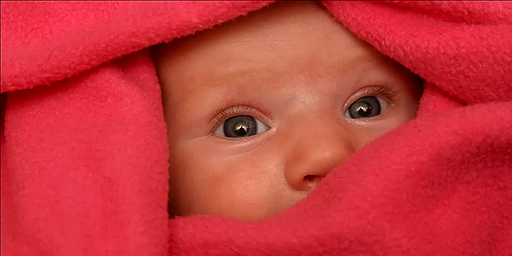An important part of establishing good sleeping habits is your baby’s sleep environment, which includes where your child sleeps, the kind of crib or bed, the type of mattress, and bedtime routines.
- For the first year of your baby’s life, the safest place for a baby to sleep is in his or her crib on thei back. When your baby can turn over on his own, there’s no need to force your baby into the back sleep position. Foam wedges or towel rolls to keep babies on their side should not be used.
- Babies should not sleep in their parents’ bed, as adult beds are not considered safe for babies: many large-scale studies have shown that it can put babies at greater risk for entrapment and suffocation. If you want your baby to be near you during the night, put the crib in your room next to your bed. Many mothers find that this makes night-time breast-feeding easier.
- Infants should never sleep on pillows, air mattresses, waterbeds, soft materials, or loose bedding. Car seats and infant carriers are not to be used to replace the crib for your baby’s sleep.
- A baby should sleep in a room that is quiet, dark, and at a slightly cool temperature. Consider dressing your baby in sleepers so that you don’t need a blanket to cover her.
- Keep your baby away from cigarette smoke. Babies, whose mothers continue to smoke during pregnancy and after birth, face an increased risk for many health issues.
- Never let your baby sleep alone on a couch, sofa, or armchair.
- Be sure your baby’s crib meets Canadian Government safety standards. See www.hc-sc.gc.ca/cps-spc/pubs/cons/crib-lits/index_e.html for more information.
- Do not leave a bottle of milk or juice in your baby’s bed.
- Establish a calming bedtime routine that is consistent and predictable. Try to keep nap times and bedtime the same every day, even on weekends.
- Set aside 10 to 30 minutes to do something special with your baby before bed. Depending on your baby’s age, this could be a quiet talk, play, or reading. Allow infants to fall asleep on their own so that they can learn to comfort themselves.
Did you know that you should not buy a second-hand crib manufactured before September 1986? Cribs made before that time don’t conform with current safety standards and could be hazardous to your baby’s health. Federal regulations require that the date of manufacture be noted on each crib that is sold in Canada, so be sure to look for a sticker or stamp containing this type of information somewhere on the crib.
Learn More
For more information the following resources may be helpful.
- Intimacy: The Art of Relationships. Psychology Today. https://www.psychologytoday.com/us/articles/196912/intimacy-the-art-relationships
- Parenting Resources and Support. Government of Canada. https://www.canada.ca/en/public-health/services/health-promotion/childhood-adolescence/parent/parenting-resources-support.html
- Healthy Families BC. https://www.healthyfamiliesbc.ca/parenting
- Growing Healthy Canadians: A Guide For Positive Development.
- What do I need to know about getting a divorce? https://www2.gov.bc.ca/gov/content/life-events/divorce/family-justice/family-law/separation-divorce/what-do-i-need-to-know-about-getting-a-divorce
- Families Change: A Guide to Separation and Divorce. https://www.familieschange.ca/
- Relationships – Tips For Success. https://www.betterhealth.vic.gov.au/health/healthyliving/Relationships-tips-for-success













